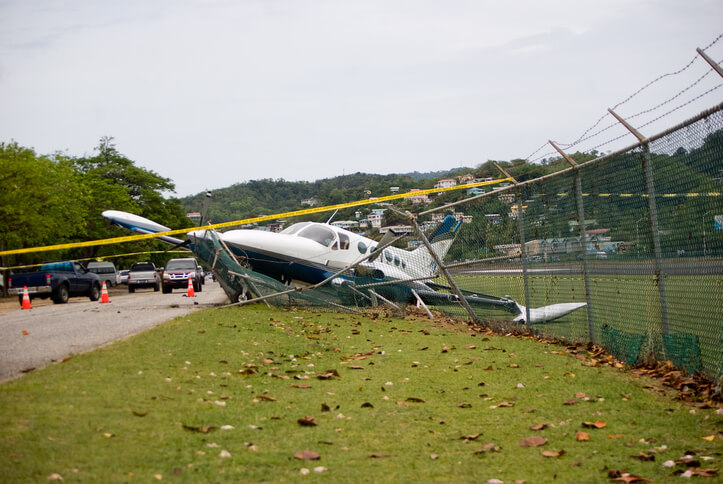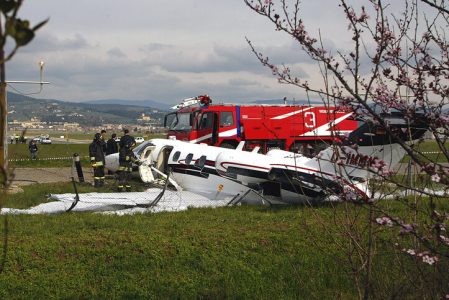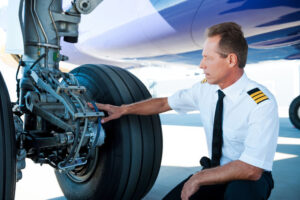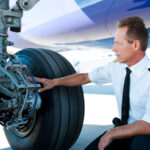Pilot training for runway excursions can help minimize occurrences
In the world of business aviation, runway excursions remain the top cause of accidents. According to the Flight Safety Foundation (FSF) 2022 Safety Report, out of 35 corporate jet accidents reported last year, a staggering 17 of them were runway excursions during takeoff and landing. This raises important questions about pilot training and why these incidents continue to occur. Despite simulators addressing this risk worldwide, we must ask ourselves if perhaps we underestimate the likelihood of such accidents happening to us.
Preventability of Runway Excursions
Fortunately, many runway excursions are entirely preventable. The solution lies in a simple action – initiating a go-around. Regardless of the reasons behind excessive speed, sink rate, or other destabilizing factors during approach, it is crucial to put aside pride and opt for a go-around.
Stabilized Approaches and Regulations
Pilots receive training on stabilized approaches and go-arounds, as these practices are not only recommended but mandated by regulations. In instrument meteorological conditions (IMC), we must be stabilized by 1000 feet, and in visual meteorological conditions (VMC), by 500 feet. This means maintaining a stable rate of descent, adhering to specified airspeed limits, following the correct glide path, and adopting the appropriate landing configuration. These concepts may seem basic, but it is alarming how many pilots disregard their training and overestimate their abilities to handle challenging situations.
The Critical Factor: Initiating the Abort After V1
One common cause of runway excursions during takeoff is attempting to abort after reaching the V1 speed. Despite repeated warnings and lessons, some pilots still gamble with their safety, hoping to stop within the remaining runway length. Yet, the reality is that experts have already calculated the necessary stop distances in performance charts, and it is far wiser to trust their calculations than to take unnecessary risks.
Continuous Training: The Key to Safe Flying
While we all make mistakes as humans, this is precisely why we undergo pilot training once or twice a year. Training serves as an opportunity to practice potentially life-threatening scenarios until they become second nature to us. Although a fire warning or similar urgency might compel us to pull back on the power and brake aggressively, it is crucial to consider our speed in relation to the crucial V1 number. The motto here is simple: train like you fly, and fly like you train.
Pilot Training for Excursion Prevention
The main factor in preventing runway excursions is to train like you fly and fly like you train. Below are some best practices, but as always, follow the procedures provided in your aircraft procedures, company manual, and the regulations.

Pre-Flight Planning
Weather Assessment: Check weather conditions thoroughly, including wind speed, visibility, and runway conditions. Use this information to plan the approach and landing.
Runway Selection: Choose the best-suited runway based on aircraft performance, wind direction, runway length, and condition.
Weight and Balance Check: Ensure the aircraft is within its weight and balance limits. Overloading or improper balance can affect stopping distances.
During Flight
Maintain Situational Awareness: Always be aware of your surroundings. This includes knowing your position relative to the runway and understanding the airport layout.
Monitor Speed and Descent Rate: Maintain a stable approach with an appropriate speed and descent rate. High speed or steep descent can lead to runway overshoot.
Landing Phase
Touchdown on Target: Aim to touch down within the first third of the runway. A late touchdown can lead to an overrun.
Use Appropriate Deceleration Methods: Use all available deceleration methods such as wheel brakes, spoilers, and reverse thrust as necessary.
Go-Around if Necessary: If the approach isn’t stable or if there are any doubts about a safe landing, perform a go-around.
Post-Landing
Stay Alert After Touchdown: Maintain focus until the aircraft has come to a complete stop and is clear of the runway.
Follow Taxi Instructions: Pay attention to taxi instructions from air traffic control and ensure you’re familiar with the airport layout to avoid confusion.
Remember, preventing runway excursions starts with good planning, continued vigilance, and always being prepared to go-around if conditions aren’t perfect. It’s better to take an extra circuit around the pattern than risk a runway excursion. A small commitment to best practices can make a monumental difference in averting accidents and preserving lives.
RELATED READING










